Music
Explore some of the extensive music collections at the Horniman.
Download the resources below, or if you would like to make your own trails or worksheets tailored to your visit, many of the images and text below (and in our other resources) can be easily copied and pasted to your own design.
- Perhaps use images from objects located in different galleries and in the Gardens to create a challenge or simple trail through the Museum to find specific objects or places.
- Use object images to encourage independent research, for instance, find out and write down three facts about an object or group of objects. Alternatively, give facts or clues and challenge your pupils to identify mystery objects.
- Set an alphabetical challenge ie find or draw 26 objects one for each letter of the alphabet.
- Create a sketchbook challenge.
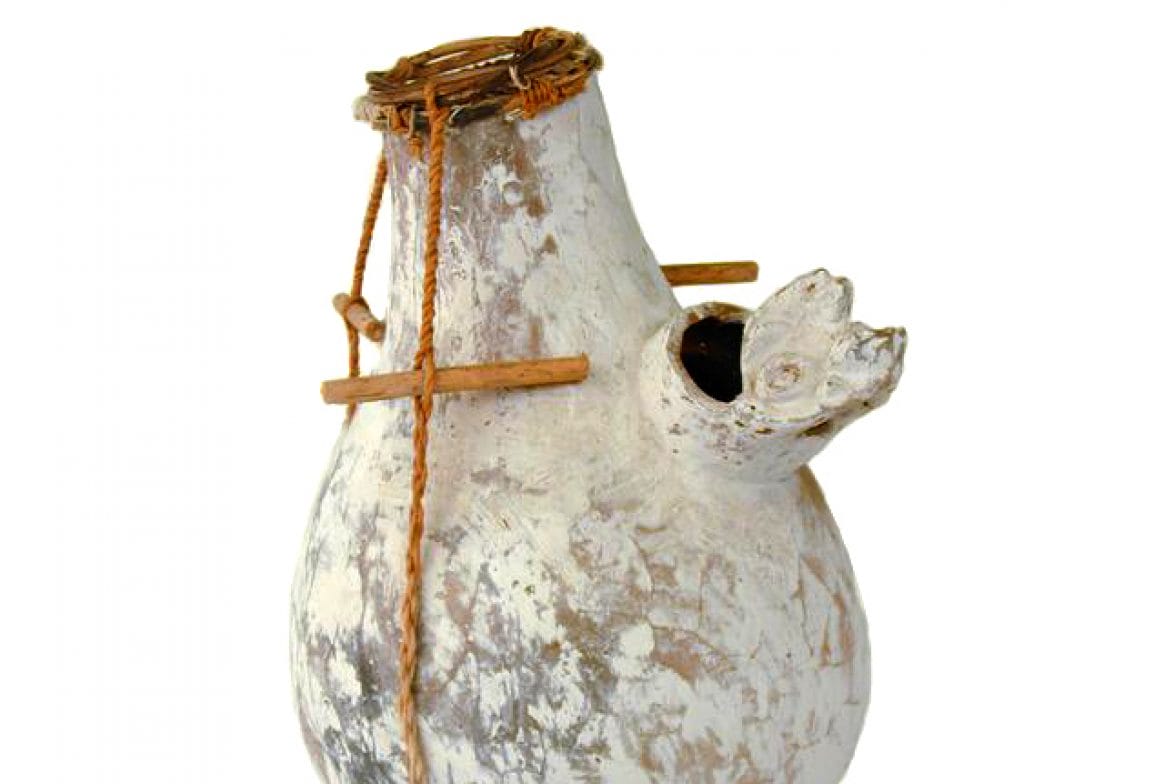
Kettledrum
This kettledrum was made in Mexico from a reused clay water pot, and is a toy version of a drum used for ceremonies inside a Lacandon God House. The Lacandon are one of the Maya peoples who live in Mexico’s Lacandon Jungle along the Usumacinta River. A drum skin covers the opening of the pot and has been attached with string tensioners. Each string can be twisted to stretch tighter or loosen the skin, changing the drum’s pitch. The short sticks stop each string from untwisting. The pot acts as a resonator- a chamber of air that vibrates as the drum is played. Which other everyday objects can you reuse to make musical instruments?
See a similar drum played at the start of this documentary about the Lacandon here.
See a similar drum played at the start of this documentary about the Lacandon here.
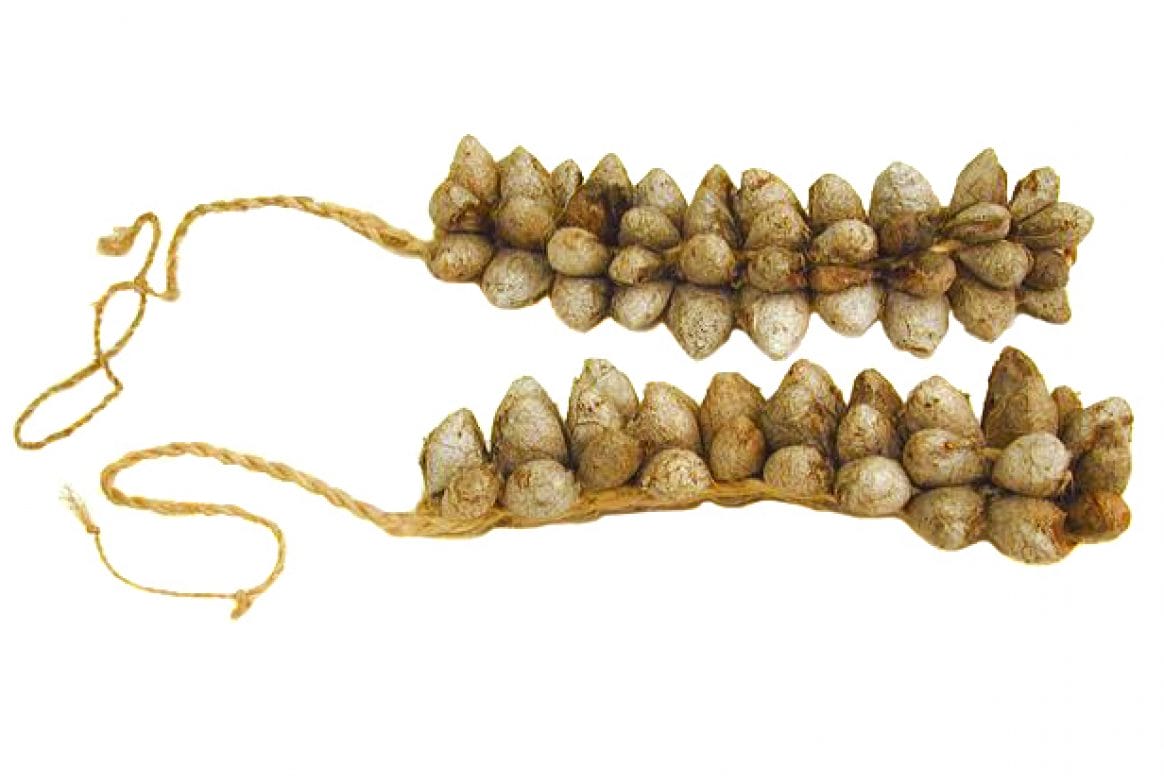
Cocoon rattles
These delicate rattles were created by carefully filling moths’ cocoons with stones and stitching them to lengths of twisted plant fibre! The fibre is used to tie each rattle around a dancer’s ankles where they rattle and rustle to the rhythm of the person’s steps. In Swaziland, Southern Africa, cocoon rattles are worn for the spectacular Reed Dance ceremony or Umhlanga. Once a year, up to 40,000 young women gather in Ludzidzini Royal Village to dance and sing for the royal family. They also present the Queen mother, Indlovukazi, with tall reeds (a plant that grows on riverbanks) to repair the windbreak around her home.
Where else on their bodies could dancers wear rattles to create music as they move?
Where else on their bodies could dancers wear rattles to create music as they move?
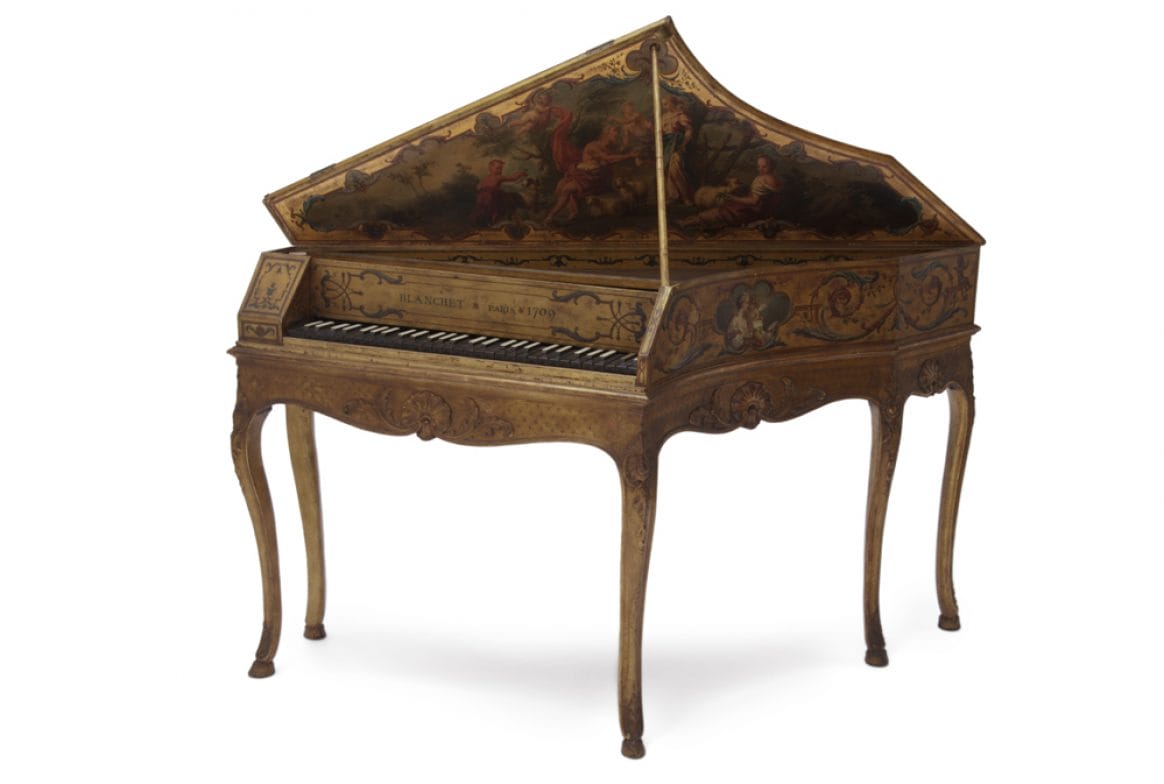
Spinet
Instruments like this beautifully decorated spinet would have been proudly displayed in the homes of rich Parisians in the 1700s. Spinets like this are very rare, as many of these expensive instruments were destroyed during the French Revolution (1789-1799), when the poor rose-up against the royal family and their wealthy friends. Unlike a piano, which has strings that are hit with small hammers, the spinet is a type of harpsichord. A harpsichord’s strings are plucked by a small piece of bird’s feather as a player presses the keys.
How will opening the spinet’s lid change the sound that it makes?
How will opening the spinet’s lid change the sound that it makes?
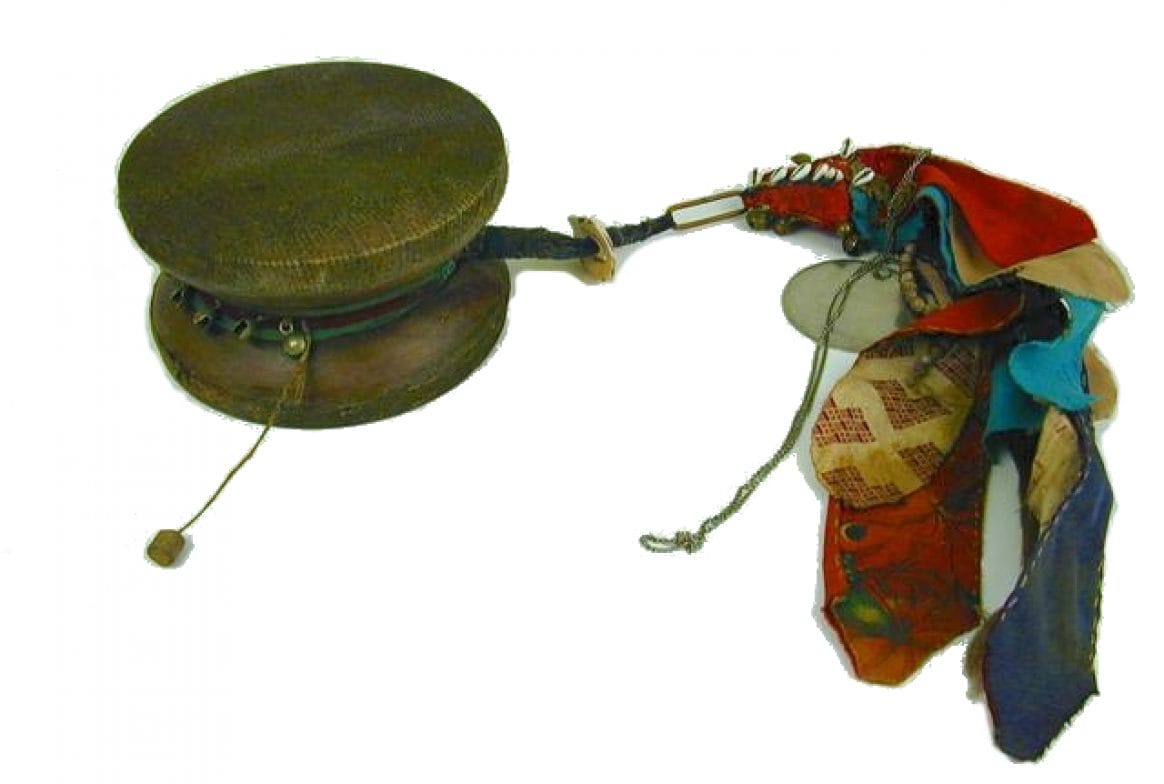
Damru; rattle drum
This rattle drum or ‘damru’ was made in Tibet and has two “faces” or drum heads that are covered with lizard skin. To play a damru, the instrument is held up and gripped around the thin middle section (where the two drums join) letting the beads and colourful fabric hang downwards. As the drum is turned to the right and left, small strings lift-up and twist from side to side, striking both drums with the hard pellets tied to each end. Along with other sacred instruments including trumpets and bells, pellet drums are often used by Tibetan Buddhists to accompany spiritual, ritualistic chanting and meditation. The damru is usually played with the right hand whilst a small bell is rung with the left. How might steady, repetitive sounds help people to meditate?
See damru played during a spiritual Buddhist practice, ‘Chōd’, here.
See damru played during a spiritual Buddhist practice, ‘Chōd’, here.
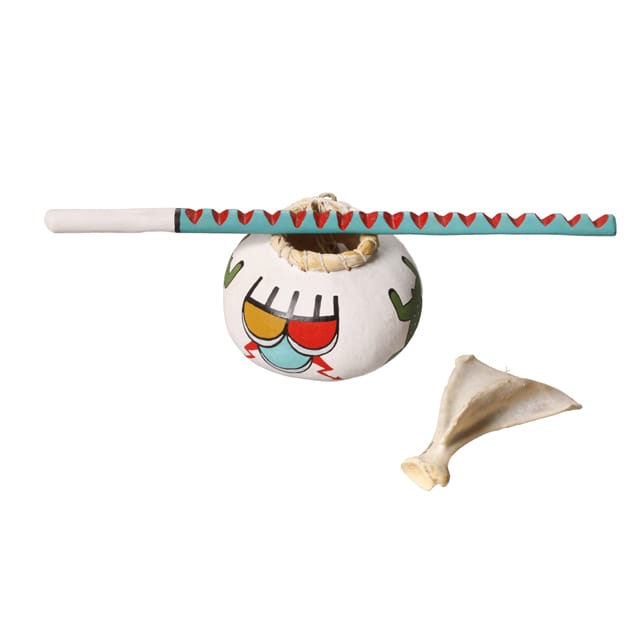
Scraped stick
This colourful scraped stick is played by rubbing a sheep’s scapula (shoulder blade bone) across a bumpy wooden rod. The sound is amplified (made louder) by a bowl made from a painted gourd- a type of pumpkin. Scraped instruments are played all around the world and are crafted from many different materials including turtle shells and plastic bottles! This scraped stick was made by Hopi people living in New Mexico, USA. Music is an important part of Hopi culture and is used in everything from medicine to seasonal dances such as the ‘Butterfly Dance’ (a thanksgiving for the harvest). How might you play this instrument so that people can dance to the music it makes?
See the Hopi Butterfly Dance here.
See the Hopi Butterfly Dance here.
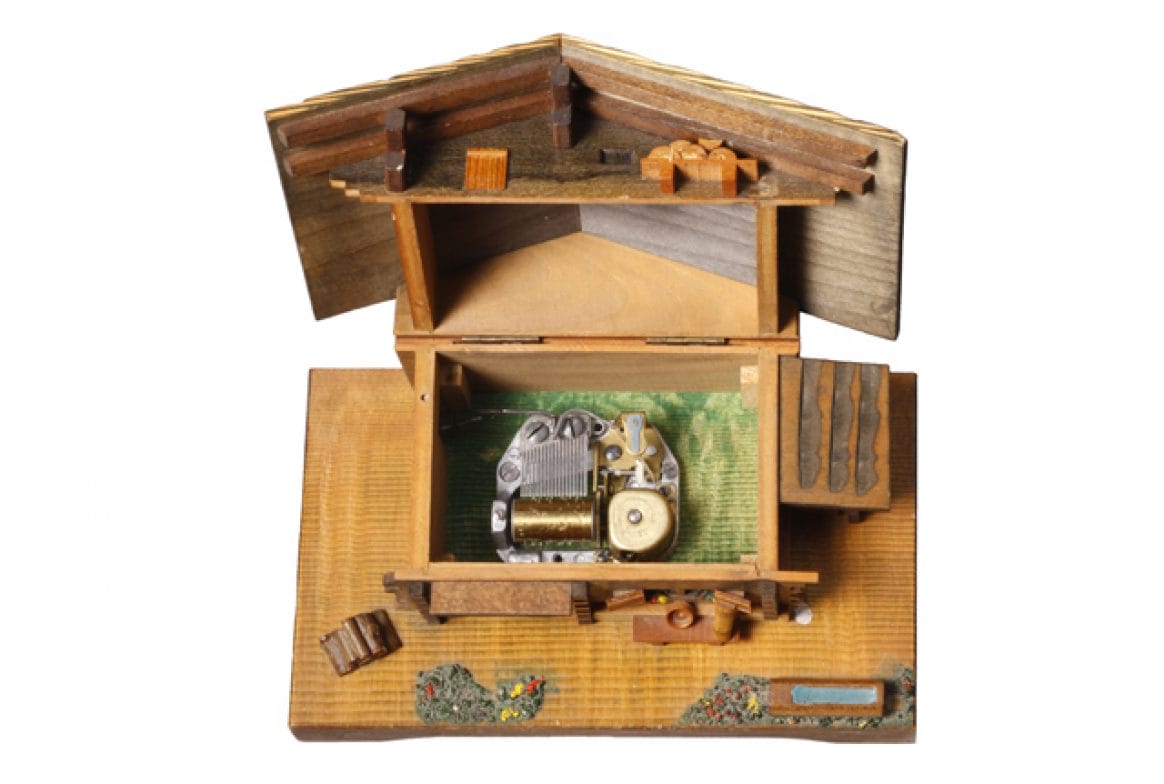
Musical box
Musical boxes were invented in Switzerland over 300 years ago and are made in many different shapes and sizes, like this little house. Music boxes are known as ‘automatic instruments’ because, once a spring inside them has been wound up, they can be left to play tunes on their own. Inside the box is a cylinder covered with bumps called ‘pins’. As the cylinder turns, these pins pluck the teeth of a tuned metal comb that is pressed against the cylinder, creating different musical notes.
This music box is displayed open in our gallery, so you can see the cylinder inside. What will happen to the music as the mechanism winds down and runs out of energy?
This music box is displayed open in our gallery, so you can see the cylinder inside. What will happen to the music as the mechanism winds down and runs out of energy?
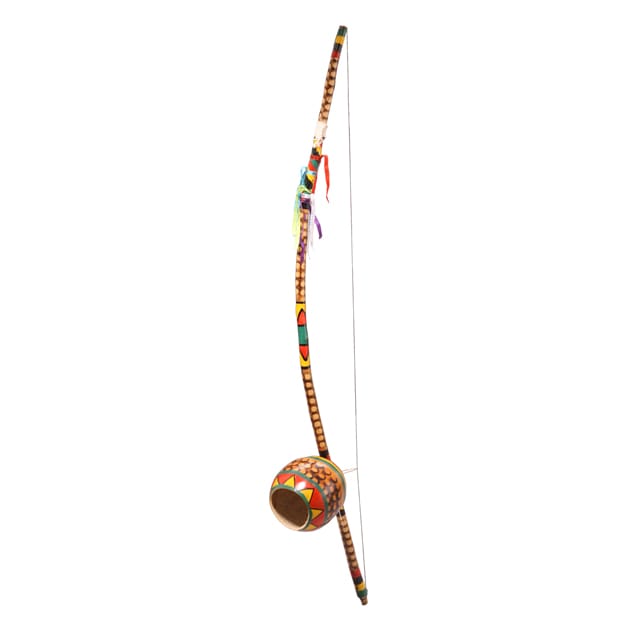
Berimbau
Berimbaus or ‘musical bows’ are often played in the bands that lead capoeira performances. Capoeira is a Brazilian martial art in which two participants perform complicated, rhythmic movements to a band’s music. Berimbau players hold the bow upright with the string facing outwards and gourd bowl towards their stomachs. The berimbau’s wire is hit with a thin stick, called a baqueta, and the pitch can be changed by pressing a stone or coin, (dobrão or pedra), against the wire in different places. Players can change the sound’s timbre (tone) by moving the open part of the gourd towards and away from their stomach. This berimbau has been brightly decorated; what might be a good occasion to play it?
See and hear a capoeira performance here.
See how a berimbau is played here.
See and hear a capoeira performance here.
See how a berimbau is played here.
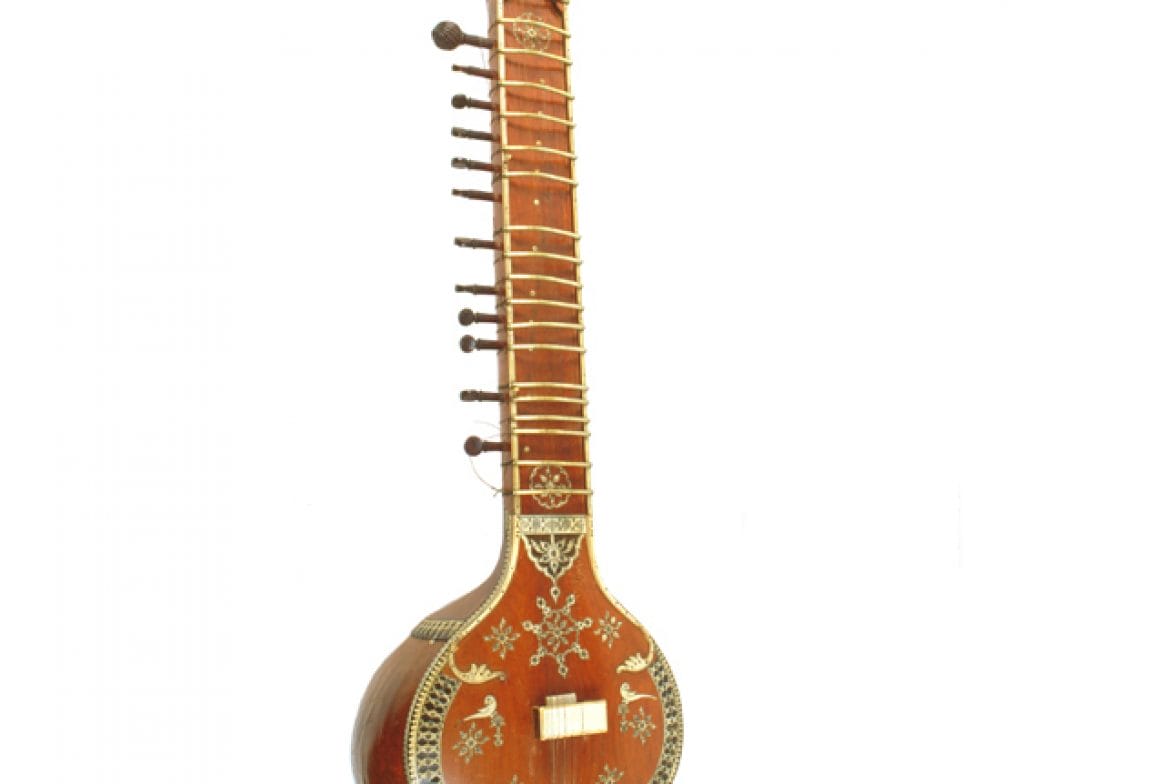
Sitar
With its unique, dream-like sound, the sitar is one of the most famous and recognisable Indian musical instruments. Sitars have two sets of strings that create overlapping layers of echoing, or reverberating, sounds. One hand plucks a sitar’s main strings with a metal pick, whilst the other creates notes by pressing on the strings in different places, or by pulling them from side-to-side to bend the sound that they make. Sitars also have a set of ‘sympathetic strings’; these are stretched underneath the main strings and are played by the vibrations of the strings above them. Sympathetic strings give the instrument its shimmery sound! Sitars are ‘string’ instruments; can you think of some other instrument families and name some instruments that are in them?
See and hear a sitar performance accompanied by tabla drums and a 5-stringed tanpura here.
See and hear a sitar performance accompanied by tabla drums and a 5-stringed tanpura here.
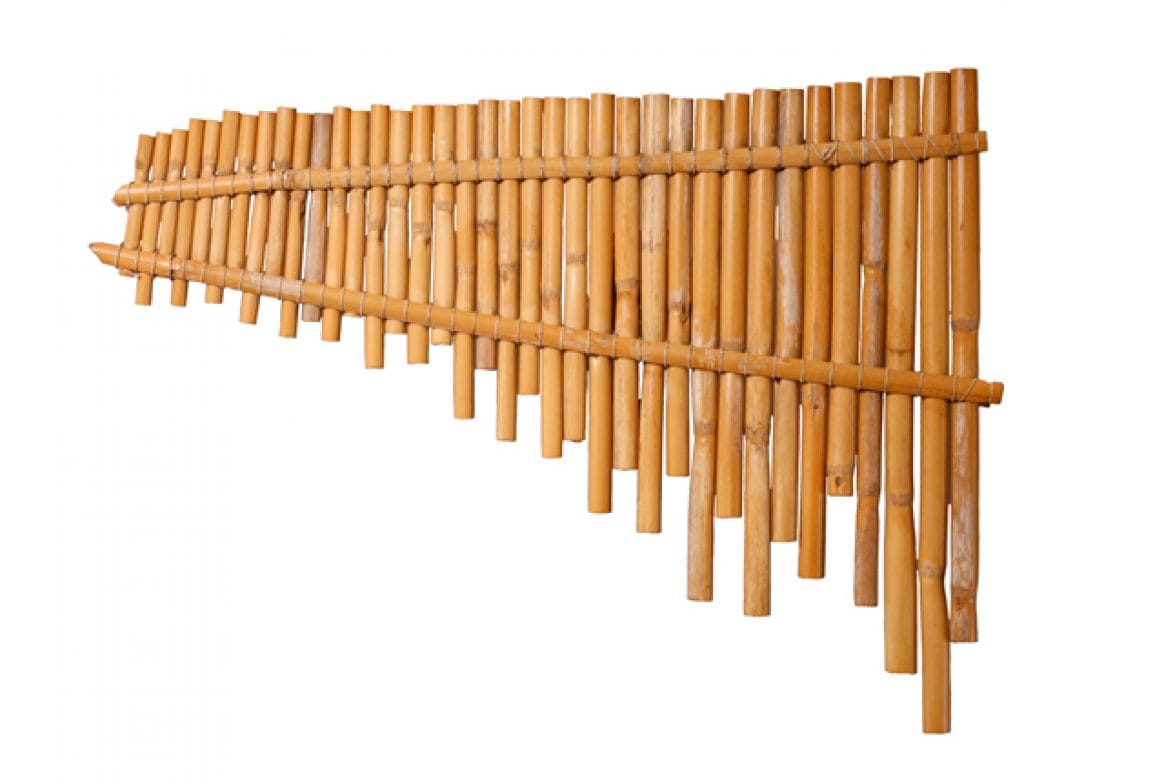
Rondador; panpipes
The rondador is the national instrument of Ecuador and was once used by the watchmen or ‘rondadores’ who would play the pipes as they patrolled the streets at night. The rondador can have as many as fifty pipes made from all sorts of different, hollow materials including: bone, clay and, in this case, reeds (a plant that grows in water). The bottom of each pipe is closed so that the air inside can vibrate when someone blows across it. Each long pipe is played at the same time as the shorter, harmonising pipe next to it. Players can also quickly blow up and down the whole instrument; this sliding style of playing is known as a ‘glissando’. How will the sound that the longest pipe makes be different to the sound made by the shortest pipe?
See a traditional Ecuadorian dance and band of musicians here.
See a traditional Ecuadorian dance and band of musicians here.
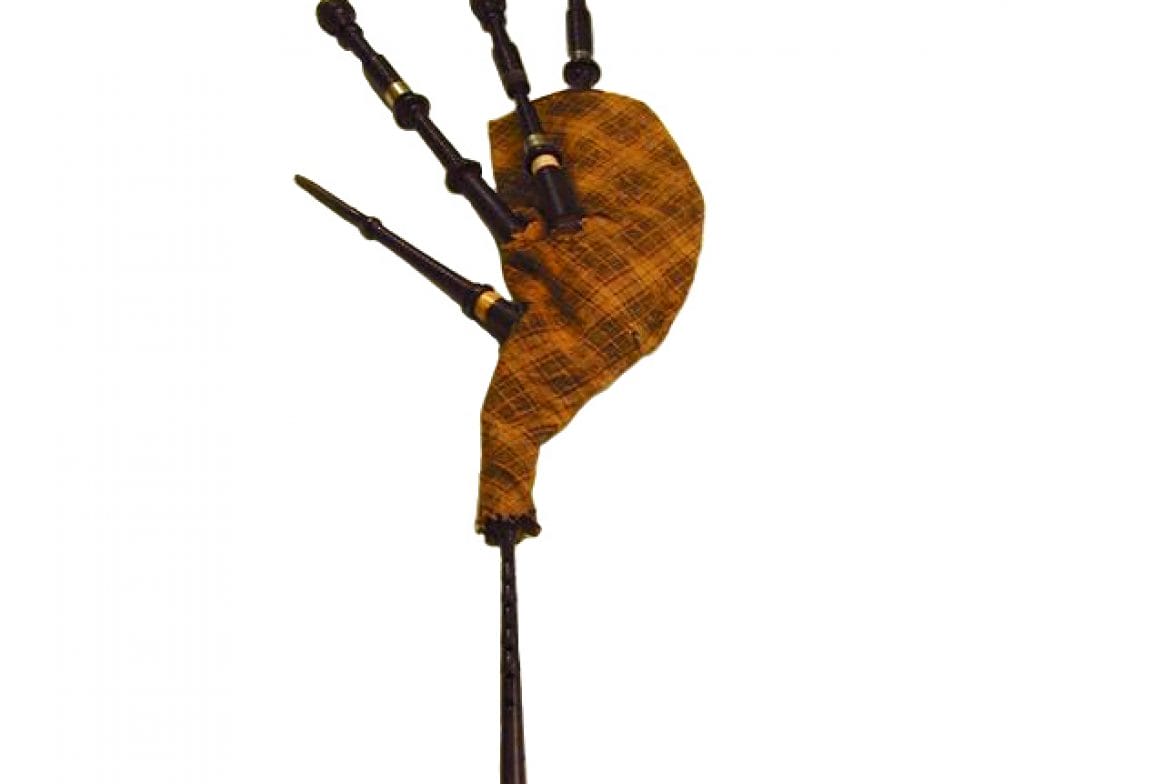
Bagpipe
Bagpipes can make more than one sound at the same time; this is called being ‘polyphonic’. The tartan-covered leather bag is a bit like a lung that is inflated with air from the player’s breath; this air can be used while the player breathes so that the music doesn’t have to stop. The bag pushes air through four different pipes at once; each pipe contains a reed that makes a sound as air blows through it. Three pipes (with bulging ends) make a constant sound called a ‘drone’. The melody is played by covering different combinations of holes with both sets of fingers on the pipe with the flattened end (the ‘chanter’). Bagpipes are the national instrument of Scotland, but are found all around the world; you can also see bagpipes from Macedonia, Italy, Poland and France in our Music Gallery.
Can you think of any other instruments that remind you of a particular country?
Can you think of any other instruments that remind you of a particular country?
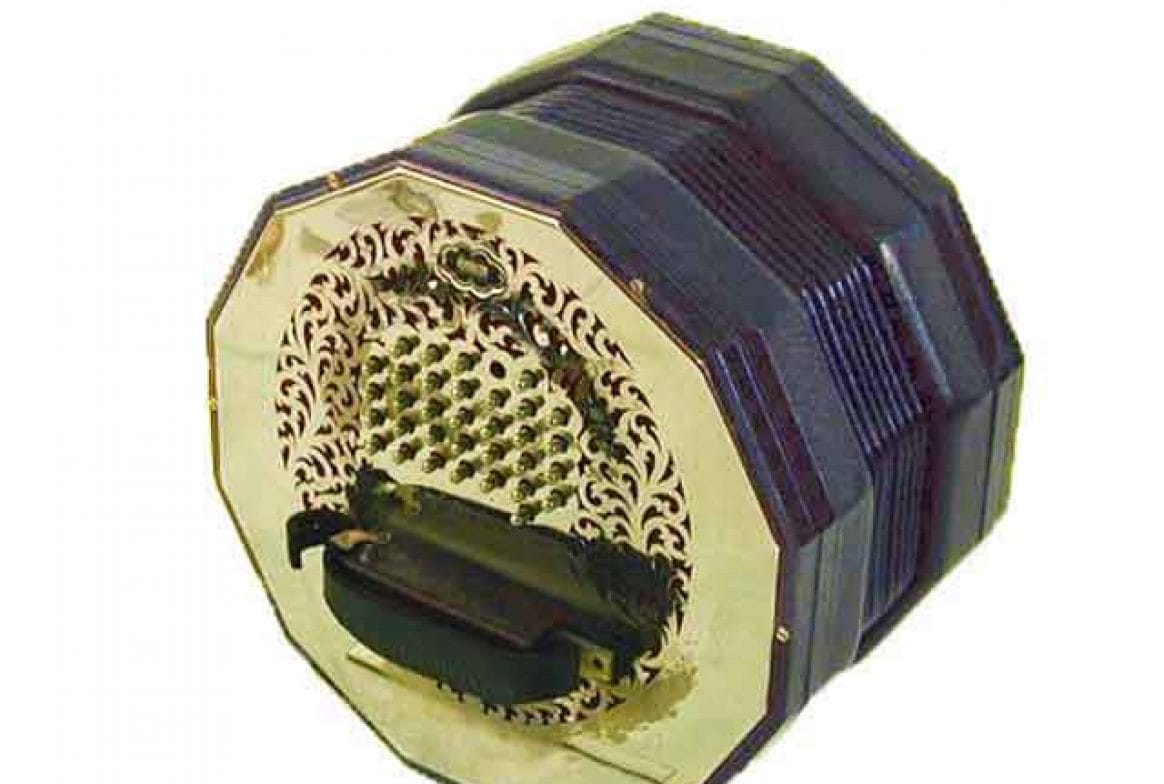
Concertina
Concertinas are played by air that is pushed and pulled through the instrument by squeezing and stretching the folding pieces of card in its middle, called ‘bellows’. To play different notes, players press tiny buttons as they pump the bellows. The buttons on this ‘duet concertina’ are arranged a bit like a piano so that two parts can be played at the same time! Buttons on the left side play low (bass) notes whilst high (treble) notes are played by pressing buttons on the right. Each button directs air to one of the many reeds that are hidden inside; concertinas have ‘free reeds’- a thin strip of metal fixed to a frame at one end. As air is forced through the tiny gap between the reed and frame, the reed vibrates, interrupting the air and creating a musical note. Which mouth-blown wind instruments can you think of that use reeds to create a sound?
See a concertina being made here.
See a concertina being made here.
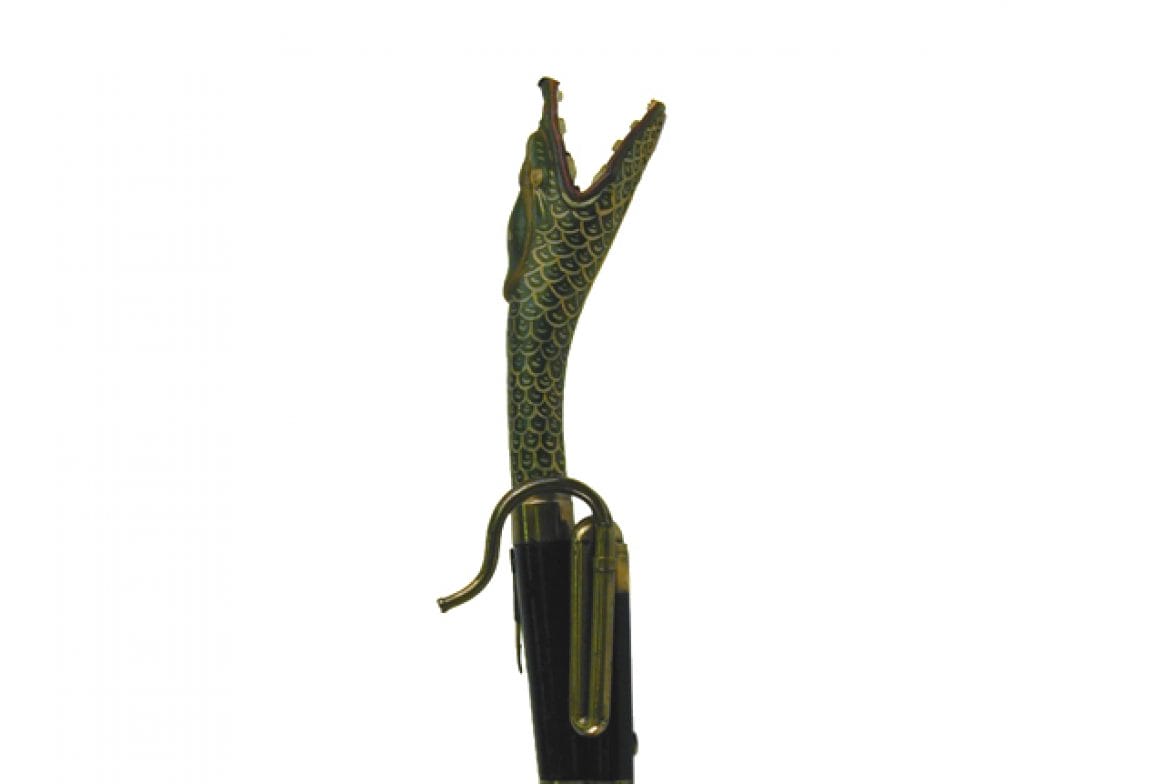
Russian Bassoon
Despite its name, this instrument was actually made in France and sounds more like a tuba than a bassoon! Traditional bassoons are woodwind instruments that are played by blowing reeds, but this instrument is in the ‘brass’ family because it is sounded by the vibration of a player’s lips instead. This bassoon is a variety of an instrument called a ‘serpent’ that is made in lots of different shapes and sizes. Russian bassoons were used by military bands in the 19th century. The flared ‘bell’ at the top has been shaped and painted like the head of a ferocious dragon to make the band’s army feel confident- and to intimidate the enemy!
Which ferocious animal would you decorate an instrument with to scare an enemy army?
Which ferocious animal would you decorate an instrument with to scare an enemy army?
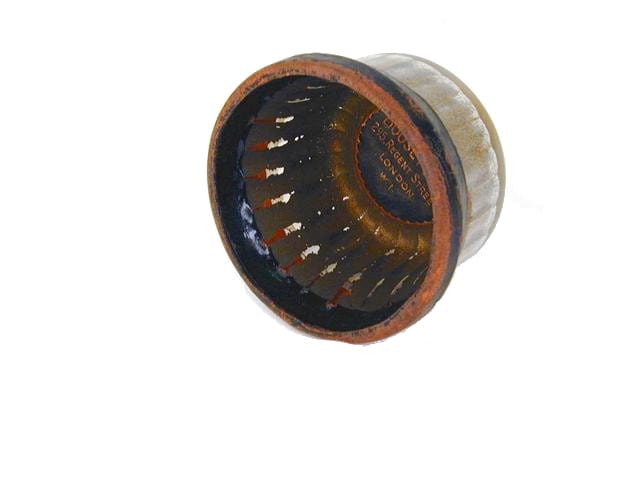
Mute
Many instruments can be played quietly by simply changing the amount of force that they are played with, but it is difficult to play brass instruments quietly. Mutes are used to cover or fill the big hole in the flared end (bell) of a brass instrument, making the sound much quieter. Metal mutes can also change an instrument’s tone or timbre, for example adding a ‘buzz’ to the sound.
What other ways can you think of to change the sound that a musical instrument makes?
What other ways can you think of to change the sound that a musical instrument makes?
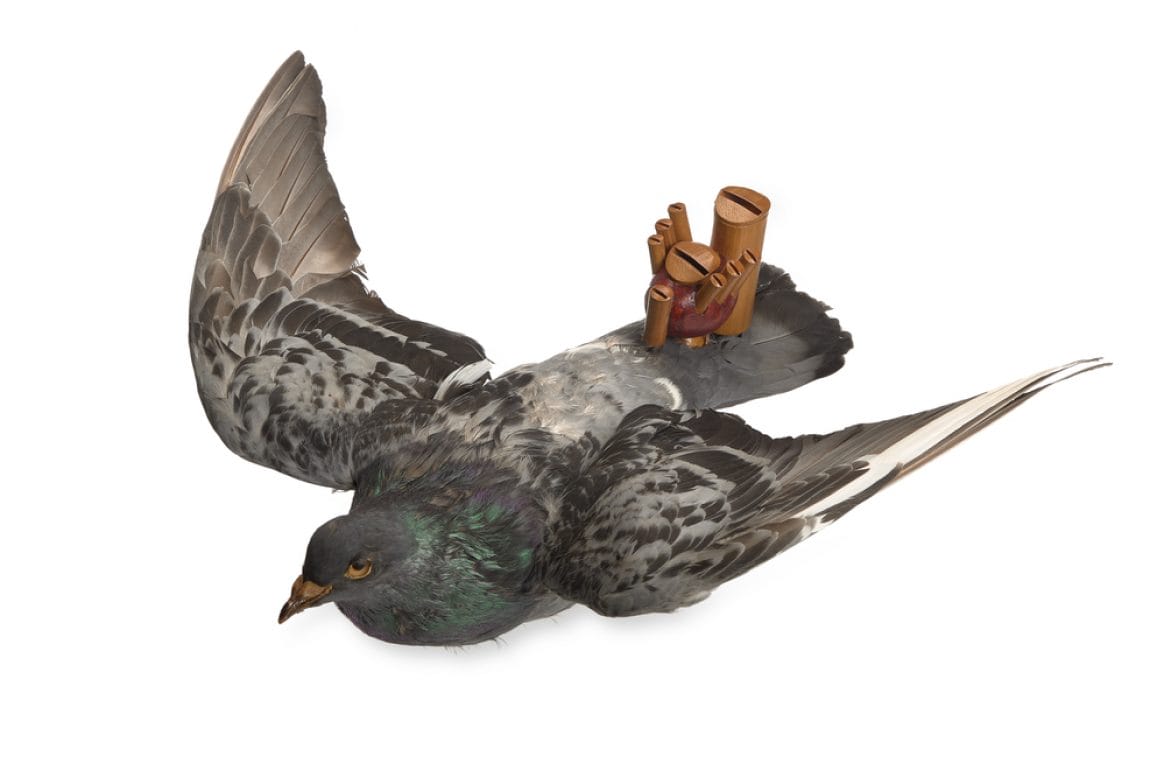
Ko-ling; pigeon whistle
Chinese Aeolian whistles, like the one fastened to this stuffed pigeon, only work when attached to live, flying birds! The whistles are very light and are gently tied to a pigeon’s tail feathers where fast-flowing air can blow-through and play them as the bird flies. Aeolian instruments are named after the Greek God of the winds, Aeolus, because they are all played by the wind as it travels across or through them. There are many different Aeolian instruments, including stringed harps and pipes, but they usually stay still rather than being tied to moving animals! Why are birds good animals to attach Aeolian instruments to?
Read the story of Aeolus here.
Learn about composer Nathaniel Mann’s ‘Pigeon Whistles’ project (2013) here.
Read the story of Aeolus here.
Learn about composer Nathaniel Mann’s ‘Pigeon Whistles’ project (2013) here.











